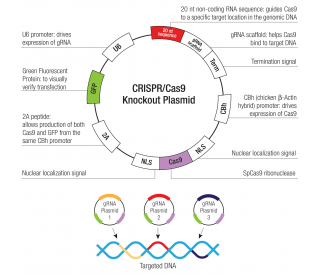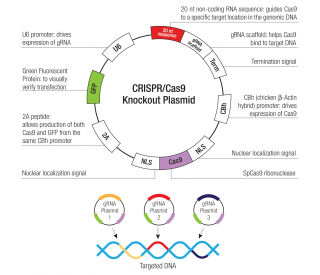详细说明
Purity
>90%, by SDS-PAGE visualized with Silver Staining and quantitative densitometry by Coomassie® Blue Staining.
Endotoxin Level
<0.10 EU per 1 μg of the protein by the LAL method.
Activity
Measured by its ability to inhibit Wnt-3a-induced alkaline phosphatase production by MC3T3‑E1 mouse preosteoblast cells. The ED 50 for this effect is 75-450 ng/ml in the presence of 10 ng/ml of Recombinant Mouse Wnt‑3a (Catalog # ).
Source
Mouse myeloma cell line, NS0-derived Thr25-Arg296, with a C-terminal 6-His tag
Accession #
N-terminal Sequence
AnalysisThr25
Structure / Form
Disulfide-linked homodimer
Predicted Molecular Mass
31 kDa
SDS-PAGE
33-44 kDa, reducing conditions
9406-SO |
| |
Formulation Lyophilized from a 0.2 μm filtered solution in PBS. | ||
Reconstitution Reconstitute at 500 μg/mL in PBS. | ||
Shipping The product is shipped at ambient temperature. Upon receipt, store it immediately at the temperature recommended below. | ||
Stability & Storage: Use a manual defrost freezer and avoid repeated freeze-thaw cycles.
|
Data Images
Bioactivity
| Recombinant Mouse Stanniocalcin 2/STC-2 (Catalog # 9406-SO) inhibits Recombinant Mouse Wnt-3a induced alkaline phosphatase production by MC3T3-E1 mouse preosteoblast cells. The ED50 for this effect is 75‑450 ng/mL in the presence of 10 ng/mL of Recombinant Mouse Wnt‑3a (Catalog # ). |
Background: Stanniocalcin 2/STC-2
Mouse STC-2 (Stanniocalcin-2) is a secreted disulfide-linked homodimeric glycoprotein hormone that is related to the STC protein. It is first discovered from corpuscles of stannous, an endocrine gland unique to bony fish (1-3). The 272 amino acid (aa) mature mouse STC-2 has an 86% homology with the human form. STC‑2 has been described as having a role in human adult height and is involved in the GIANT consortium (4, 5). STC-2 is expressed in a wide variety of tissues. It regulates calcium and phosphate homeostasis (1-3), enhances mesenchymal stem cell survival (6), promotes cell proliferation in cervical cancer (7), suppresses breast cancer cell migration and invasion (8), promotes osteoblast differentiation (9), and inhibits longitudinal bone growth directly at the growth plate (10). It is also a biomarker for cervical and lung cancers (11, 12).Fform
References:
Wagner, G.F. et al. (1995) Proc. Natl. Acad. Sci. 92:1871.
Zhang, J. et al. (1998) Protein Expression and Purification. 12:390.
Takei, Y. et al. (2012) Bone. 50:998.
Marouli, E. et al. (2017) Nature 542:186.
Holmes, D. (2017) Nature Reviews Endocrinology. 13:190.
Kim PH, et al. (2015) BMB Rep. 48:702.
Wang Y, et al. (2015) Biochem Biophys Res Commun. 466:362.
Hou J, et al. (2015) PLoS One. 10:e0122179.
Zhou J, et al. (2016) Mol Med Rep. 14:5653.
Wu S, et al. (2006) J Biol Chem. 281:5120.
Shen XJ, et al. (2014) Int J Clin Exp Pathol. 7: 8770.
Na SS, et al. (2015) Biochim Biophys Acta. 1854:668.
Entrez Gene IDs:
8614 (Human); 20856 (Mouse)
Alternate Names:
Stanniocalcin 2; stanniocalcin-2; STC2; STC-2; STC-2Stanniocalcin-related protein; STC-related protein; STCRP







![Anti-CARD11 antibody [EPR2557] 100µl](https://yunshiji.oss-cn-shenzhen.aliyuncs.com/202407/25/ryuecwsu03m.jpg)
![Anti-CARD11 antibody [EPR2557] 40µl](https://yunshiji.oss-cn-shenzhen.aliyuncs.com/202407/25/0l4lvuuesv1.jpg)

![Anti-Caspase-9 antibody [E23] 100µl](https://yunshiji.oss-cn-shenzhen.aliyuncs.com/202407/25/3jnd4412gqi.jpg)

![Anti-CKS2 antibody [EPR7946(2)] 100µl](https://yunshiji.oss-cn-shenzhen.aliyuncs.com/202407/25/cfdt44gkqre.jpg)



 粤公网安备44196802000105号
粤公网安备44196802000105号